| In the Language Labels panel, you manage the labels for all the available languages in XperienCentral. This includes labels that appear in content elements and all informational and error messages. You can also add new languages and set the default content language.
To access the Language Labels panel, navigate to Configuration > Language Labels:
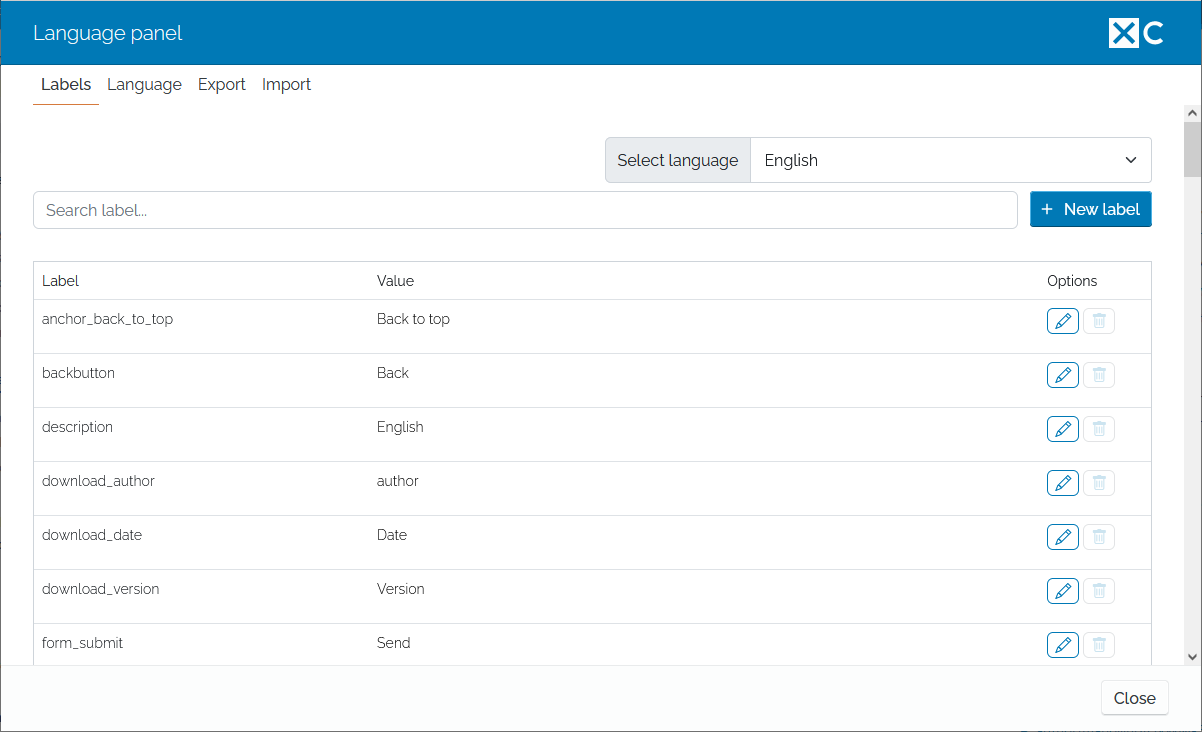
In This Topic
LabelsOn the "Labels" tab you manage the default and custom language labels for XperienCentral. Adding a Custom Language LabelTo add a custom language label, follow these steps: - Select the language to which you want to add a custom label from the "Select language" drop-down list.
- Click [New label].
- Enter the internal name for the new label in the "Label name" field. The name should be lowercase and multiple words joined by the underscore character ( _ ) — "download_version" for example. See the format of the default labels for other examples.
- Enter the string that appears in the XperienCentral GUI in the "Value" field.
Click the checkmark icon to save the new label.
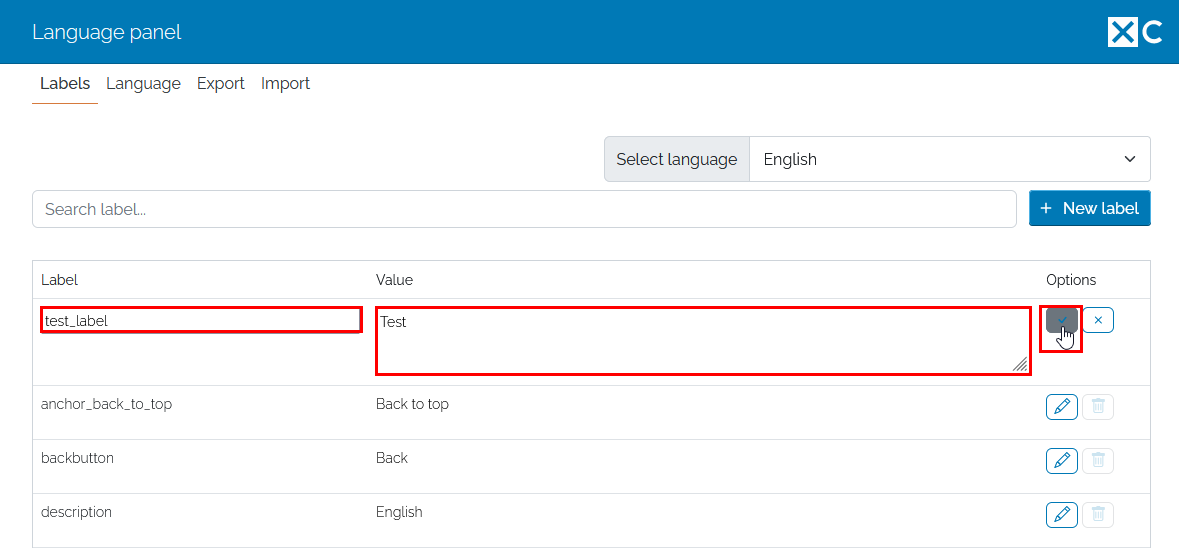
| Info |
|---|
- Because the list is sorted alphabetically in ascending order, the new label may disappear from view after you save it.
- If the label is used in more than one language, be sure to switch the language using the "Select language" drop-down and then modify the value of the label for the other language(s) in which it will be used.
|
Modifying a Language LabelYou can modify both the default XperienCentral language labels as well as all custom language labels. To modify a language label, follow these steps: - Select the language for which you want to modify the label(s) from the Select Language drop-down list.
- Click the pencil icon next to the label you want to modify:
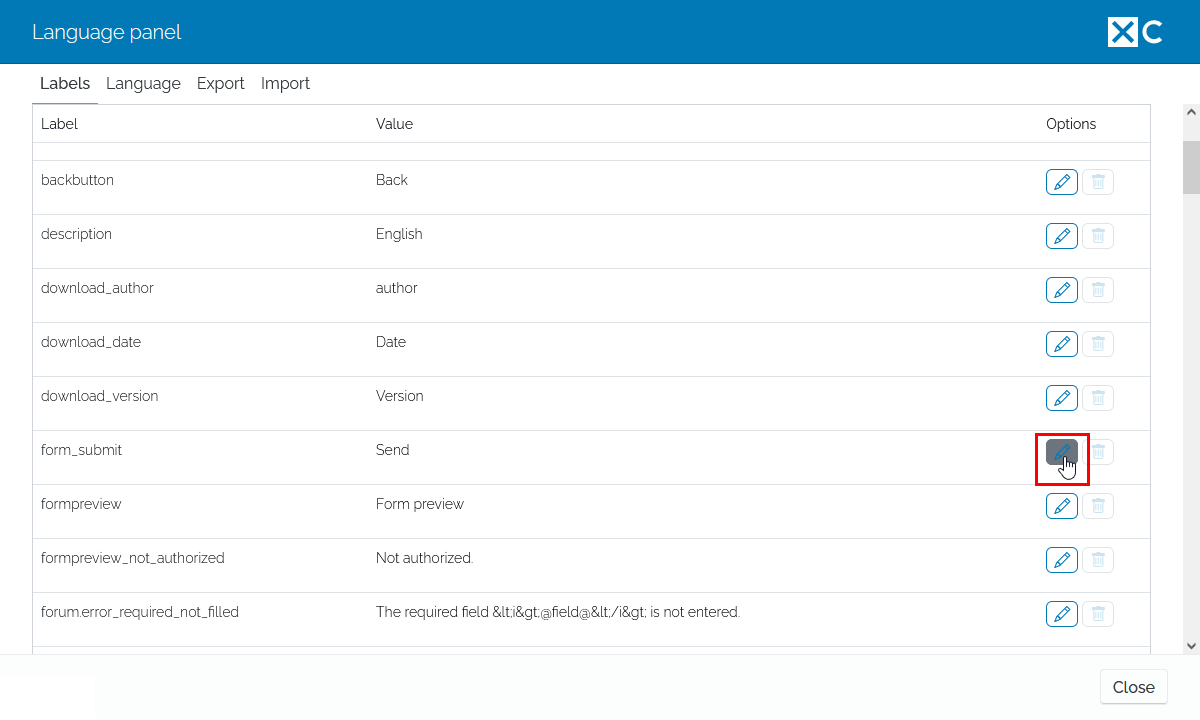
- Modify the language label "Value" string.
- Click the checkmark icon to apply the change.
- Repeat these steps for all labels that you want to modify for the selected language.
- Click [Apply] to submit your modifications.
Deleting a Modified Language LabelEnglish (EN) and Dutch (NL)The default language labels in English and Dutch XperienCentral cannot be deleted. However, if you have modified a language label, you can delete the modification. To do so, click the "trash" icon to the right of a modified language label. The modification will be deleted and the default value of the label will be restored. If a default language label has not been modified, the "trash" icon is grayed out and unavailable. Other LanguagesFor every language that you add to XperienCentral in addition to English (EN) and Dutch (NL), all language labels can be deleted. Be careful when deleting default XperienCentral language labels because it could affect the usability of configuration panels and the Workspace.
LanguageThe "Language" tab shows the languages that are available for content in XperienCentral. The default languages are "Dutch" and "English". Here you can also add more languages or delete any language(s) that you have added. Language PropertiesFor each supported language, the following properties are shown:
| Property | Description |
|---|
| Default language | Specifies whether language is the default language. See "Setting the Default Language for XperienCentral" below for more information. | | State | Shows the state of the language (Active or Inactive). To change the state of a language, click the pencil icon to the right of the language. You can then check or clear the "State" checkbox to make the language active or inactive:

Click the checkmark icon to save the change.
| | Dutch name | The string that appears in drop-down lists in XperienCentral when you select the language property for a content item and in the Language drop-down when the GUI is set to "Dutch". | | English name | The string that appears in drop-down lists in XperienCentral when you select the language property for a content item and in the Language drop-down when the GUI is set to "English". | | Meta tag value | The description of the language in the form locale_LOCALE based on the ISO 639 standard (en_EN for English, nl_NL for Dutch, and so forth). | | Fallback | The language version to use if a content item cannot be found in the requested language. To select the fallback language, expand the drop-down list and select it.
| | Delete | Languages that have been added in addition to "Dutch" and "English" can be deleted by clicking the "trash" icon to the right of the language. The languages "Dutch" and "English" cannot be deleted. |
Adding a LanguageTo add a new language to XperienCentral, follow these steps: - Click [+New Language].
- In the "Dutch name" field, enter the name of the language as it appears in XperienCentral when the editing language is set to "Dutch".
- In the "English name" field, enter the name of the language as it appears in XperienCentral when the editing language is set to "English".
- In the "Meta tag value" field, enter the ISO 639-1 code for the language in the format xx_XX. For example, for German the Meta tag value would be "de_DE".
- Select the "Fallback language".
- Define the labels for the new language.
- Make the new language active.
The new language is now available in the language drop-down lists in the left and right Sidebars. For example:
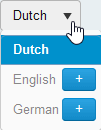
The new language is now also available in the default language drop-down list for a page. For example:
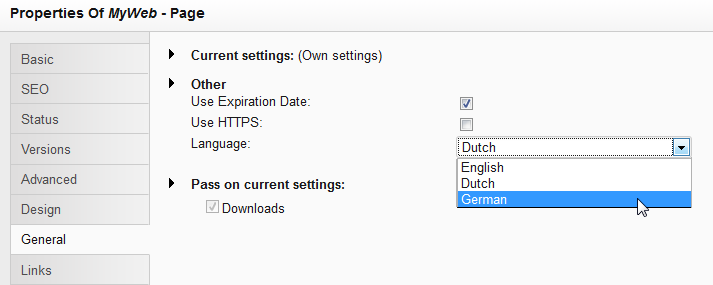
| Anchor |
|---|
| setting_the_default_language_for_xperiencentral |
|---|
| setting_the_default_language_for_xperiencentral |
|---|
|
Setting the Default Content Language for XperienCentral
In XperienCentral, you can set any of the available languages as the default content language of the edit environment. The default content language determines the following: - The language drop-down in a sidebar header is set to the default content language each time you start a new XperienCentral session.
- All content items you create are in the default content language if you do not switch languages.
- Content created by a developer using the Java API is in the default content language if one is not explicitly specified in the code.
| Info |
|---|
Dutch is the default language for the XperienCentral edit environment in a clean installation. |
The default content language is the one with "Yes" in the "Default language" column. To change the default language, follow these steps: - Click the pencil icon next to the language you want to make the default.
- Click the checkbox in the "Default" language column to select it:
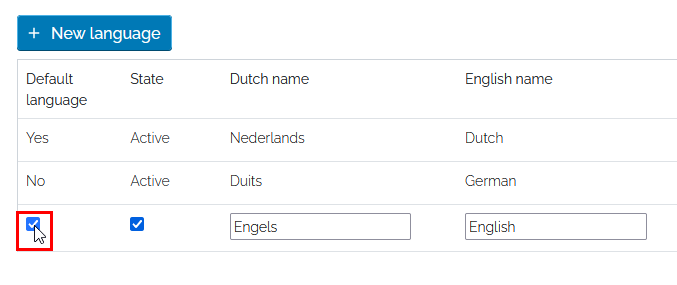 - Click the checkbox to the right of the language to save its settings. The language is now the default.
Deleting a LanguageTo delete a language, follow the steps below. You can only delete a language that you have added. Because Dutch and English are the default supported languages in XperienCentral, neither of them can be deleted.
| Warning |
|---|
When you delete a language, all content items based on that language will also be deleted, therefore you should exercise extreme caution when performing this operation. |
To delete a language: - Click the "trash" icon next to the language you want to delete.
- Click [Delete] to confirm the operation:
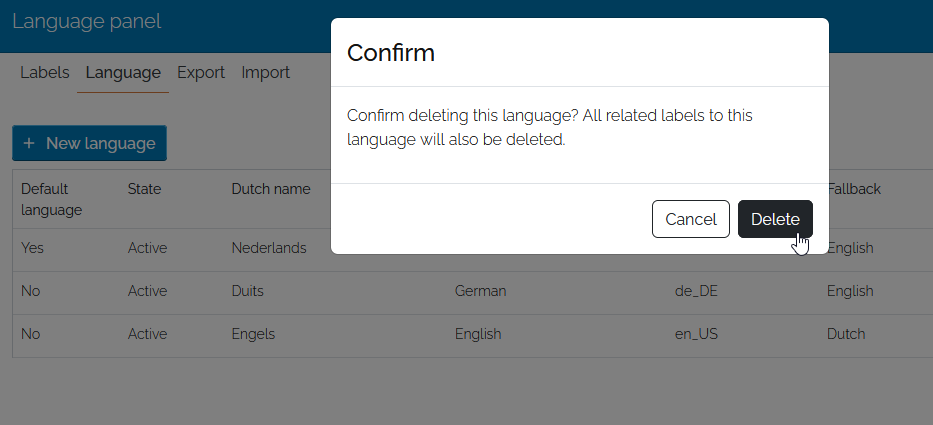
All the labels for the language and all content items containing the language are deleted.
Back to top
Exporting Custom Language LabelsYou can export custom language labels as well as default language labels that have been modified to a file and then import it in another XperienCentral web initiative. To export custom language labels, follow these steps: - Click the "Export" tab.
- Select the language from which you want to export the labels from the "Select language" drop-down list. Select "All languages" to export all custom/modified labels from all languages in your XperienCentral web initiative.
- The custom/modified language labels present in the language(s) you selected are saved in the Downloads folder of your browser in a .zip file. Within the export file there is a .properties file for each exported language containing a mapping between the name of the custom label and its value.
Back to top
Importing Custom Language LabelsYou can import custom language labels and default languages that have been modified from another XperienCentral web initiative into the current web initiative. To import custom/modified language labels from one or more languages, follow these steps. - Click the "Import" tab.
- Navigate to the folder containing the .zip language label export file.
- Select the file.
- Click [Import]. The language labels present in the export file are imported into the present web initiative.
Back to top
InheritanceIf a language label is empty it is possible to have it inherit the value from a related language label. This can be turned on in the settings tool by enabling the property 'use_languagelabels_inheritance'. If enabled, an empty label with name 'search.button.find' will , when empty, use the value from 'button.find' if available. Abstractly the inheritance structure works like this: a.b.c > b.c > c Back to top
| 






